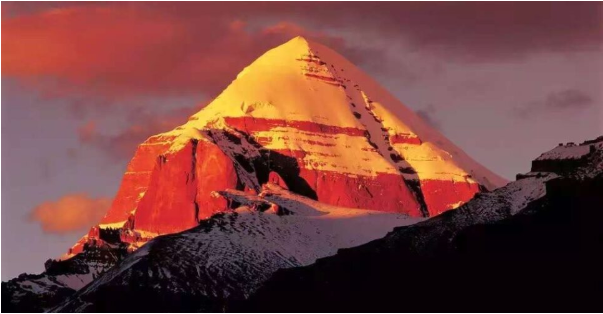The Kailash Mansarovar tour represents one of the most profound spiritual journeys on Earth, attracting thousands of pilgrims and adventure seekers annually. This sacred expedition combines religious devotion, breathtaking natural beauty, and personal transformation in the remote landscapes of Tibet. Located at an altitude of over 15,000 feet, Mount Kailash and the pristine Mansarovar Lake offer an unparalleled experience that transcends ordinary travel.
The Sacred Significance of Kailash Mansarovar
Mount Kailash, standing majestically at 6,638 meters, holds immense religious importance across four major faiths. Hindus revere it as the eternal abode of Lord Shiva and Goddess Parvati, where the divine couple resides in perpetual meditation. Buddhist traditions consider it the home of Buddha Demchok, representing supreme bliss and compassion. For Jains, it’s the site where their first Tirthankara, Rishabhanatha, attained liberation. The Bon religion, Tibet’s ancient faith, regards Kailash as the sacred nine-story swastika mountain.
Mansarovar Lake, situated at the base of Mount Kailash, amplifies the spiritual significance of this region. This pristine freshwater lake, one of the highest in the world, symbolizes purity and consciousness in Hindu scriptures. Pilgrims believe that bathing in its sacred waters cleanses sins accumulated over lifetimes, while drinking its water ensures salvation and spiritual awakening.
Popular Routes for Kailash Mansarovar Tour
Via Nepal Route
The most popular and accessible route begins from Kathmandu, Nepal. You can’t go to Kailash Mansarovar Yatra alone. To get the visa and permit, we need a minimum of 5 people for the trip. This route start from Kyirong border and another route typically involves flying from Kathmandu to Lhasa. From Kyirong border travelers proceed by road to Mansarovar Lake and Mount Kailash.
Travel Itinerary From Kathmandu Nepal
Day 1. Drive to Rasuwagadi , Kyirong Nepal border 2,890 m
Day 2. cross the Kyirong border and rest day for acclimatization.
Day 3. Drive to Saga 4,400 m – 05 hrs.
Day 4. Drive to Lake Manasarover 4,588 m near Chu Gompa – 07 hours.
Day 5. At Manasarover rest day for acclimatization.
Day 6. Short drive to Taboche past Darchen 4,600 m, walk to Dhiraphuk 4,900 m – 05 hours.
Day 07. Trek to Zutul-Puk 4,760 m via Dolma-la 5, 630 m – 06 hrs
Day 08. Trek near Darchen and drive to Saga town – 07 hrs.
Day 09. Drive to Kyirong in local guesthouse – 05 hrs.
Day 10. Drive back to Kathmandu and transfer to hotel – 06 hrs.
Indian Government Route
The Indian government organizes official Kailash Mansarovar Yatra through two main routes. Out of 5,561 applicants, 250 will travel via the Lipulekh route in 5 batches, and 500 via the Nathu La route in 10 batches. The Lipulekh route passes through Uttarakhand, while the Nathu La route goes through Sikkim. Both routes are now fully motorable, making the pilgrimage more accessible than ever before.
Helicopter Services From Nepal
For those seeking comfort and time efficiency, helicopter services are available from Kathmandu to Kyirong Border. These packages significantly reduce travel time and physical strain, making the journey accessible to elderly pilgrims and those with mobility concerns.
Essential Preparations and Requirements
Documentation and Permits
Proper documentation forms the cornerstone of a successful Kailash Mansarovar tour. A valid passport with at least nine months’ validity is required. Additionally, obtaining a Tibet Travel Permit (TTP) is mandatory. The permit process requires working with authorized tour operators, as individual travel is not permitted in this region.
As Tibet is an autonomous region of China, all travelers must obtain a special Tibet Travel Permit, which is usually arranged through a licensed Kailash Tour Operator from Nepal. The visa process typically takes 15-25 Days and must be completed in Kathmandu for most routes.
Physical Fitness and Health
The high altitude and challenging terrain demand excellent physical preparation. Pilgrims should begin conditioning exercises at least three months before departure, focusing on cardiovascular endurance, leg strength, and breathing exercises. Medical clearance from a physician is essential, particularly for those with heart conditions, respiratory issues, or other chronic ailments.
Essential Gear and Equipment
Proper gear selection can make the difference between a comfortable journey and a challenging ordeal. Essential items include high-quality trekking boots, warm clothing layers, rain gear, sleeping bags rated for sub-zero temperatures, sunglasses, sunscreen, and personal medications. Many tour operators provide detailed packing lists to ensure pilgrims are adequately prepared.
The Spiritual Journey: Parikrama and Rituals
Mount Kailash Parikrama
The circumambulation of Mount Kailash, known as Parikrama or Kora, represents the spiritual heart of the pilgrimage. This 52-kilometer trek around the sacred mountain typically takes three days to complete, with pilgrims walking clockwise while chanting prayers and mantras. The journey includes crossing the challenging Dolma-la Pass at 5,630 meters, considered the highest point of the trek.
Each step of the Parikrama holds deep spiritual significance. Pilgrims believe that completing one circuit cleanses sins of a lifetime, while 108 circuits guarantee enlightenment and liberation from the cycle of rebirth. The physical challenge of the trek serves as a form of spiritual purification, testing devotion and determination.
Mansarovar Lake Rituals
At Mansarovar Lake, pilgrims engage in various sacred rituals. The holy bath in the lake’s pristine waters represents spiritual cleansing and rebirth. Many pilgrims also perform puja ceremonies on the lake’s shores, offering prayers and gratitude for the opportunity to visit this sacred site. The practice of collecting sacred water from the lake to carry home extends the spiritual benefits of the journey.
Best Time to Visit and Weather Conditions
The Kailash Mansarovar tour season typically runs from May to September, when weather conditions are most favorable. During this period, temperatures range from 0°C to 20°C during the day, though nights can still be extremely cold. July and August offer the warmest conditions but also bring the possibility of rainfall and cloudy skies that may obscure mountain views.
May and September are often considered optimal months, offering clear skies, stable weather, and spectacular mountain vistas. However, these months also see the highest demand, requiring early booking and higher costs.
Accommodation and Facilities
Accommodation options vary significantly depending on the chosen route and package level. Basic guesthouses and camping arrangements are standard, with facilities ranging from simple beds to more comfortable heated rooms. Pilgrims should expect shared facilities and basic amenities, as luxury accommodations are not available in this remote region.
Meals typically consist of simple, nutritious food adapted to high-altitude conditions. Vegetarian options are readily available, and tour operators usually accommodate dietary restrictions with advance notice.
Cultural Immersion and Local Interactions
The journey offers unique opportunities to interact with Tibetan communities and experience their rich cultural heritage. Local Tibetans, many of whom work as guides, porters, and service providers, share their knowledge of the region’s history, traditions, and spiritual practices. These interactions provide valuable insights into the local way of life and deepen the overall experience.
Visiting monasteries and witnessing Buddhist ceremonies adds another dimension to the pilgrimage, regardless of one’s personal faith background. The multicultural nature of pilgrim groups also creates opportunities for cross-cultural exchange and shared spiritual experiences.
Cost Considerations and Booking
The cost of a Kailash Mansarovar tour varies significantly based on the chosen route, accommodation level, and included services. Given the yatra’s popularity, early booking is advisable. Tour operators have opened registrations for 2025, and securing spots well in advance ensures better prices and preferred dates.
Budget considerations should include not only the tour package cost but also personal gear, travel insurance, tips for local staff, and miscellaneous expenses. Group bookings often offer better rates, and joining established tour groups can reduce individual costs.
Health and Safety Considerations
High-altitude sickness poses the primary health risk during the Kailash Mansarovar tour. Symptoms can include headaches, nausea, fatigue, and difficulty sleeping. Proper acclimatization, adequate hydration, and gradual altitude gain help minimize these risks. Carrying altitude sickness medication and consulting with healthcare providers before departure is essential.
Emergency evacuation insurance is highly recommended, as medical facilities in remote areas are limited. Tour operators typically carry communication equipment for emergency situations, but pilgrims should be prepared for challenges in accessing immediate medical care.
Environmental Responsibility
The fragile ecosystem of the Kailash region requires careful environmental stewardship from all visitors. Following Leave No Trace principles, proper waste disposal, and respecting local wildlife habitats ensure this sacred landscape remains pristine for future generations. Many tour operators now emphasize eco-friendly practices and support local conservation efforts.
Conclusion
The Kailash Mansarovar tour transcends ordinary travel, offering a transformative spiritual journey that challenges both body and soul. This sacred pilgrimage combines religious devotion, natural beauty, and personal growth in ways that leave lasting impacts on participants. Whether undertaken for religious reasons, adventure, or personal transformation, the journey to Mount Kailash and Mansarovar Lake represents one of humanity’s most profound travel experiences.
The combination of physical challenge, spiritual significance, and natural grandeur creates an unforgettable adventure that continues to inspire pilgrims long after their return home. For those called to undertake this sacred journey, proper preparation, respectful participation, and open hearts ensure the most meaningful experience possible.
Key Takeaways
- Sacred Significance: Mount Kailash and Mansarovar Lake hold profound religious importance across four major faiths, making this pilgrimage uniquely significant
- Multiple Routes Available: Choose from Nepal route, Indian government routes, or helicopter services based on preferences and physical capabilities
- Proper Documentation Essential: Valid passport and Tibet Travel Permit are mandatory, with group travel requirements for permits
- Physical Preparation Critical: High-altitude conditions and challenging terrain demand excellent physical fitness and proper acclimatization
- Seasonal Considerations: May to September offers the best weather, with May and September providing optimal conditions
- Spiritual Core: The Mount Kailash Parikrama and Mansarovar Lake rituals form the spiritual heart of the pilgrimage
- Early Booking Necessary: High demand requires advance reservations, especially for preferred dates and routes
- Environmental Responsibility: Protecting the fragile ecosystem ensures this sacred site remains preserved for future pilgrims

